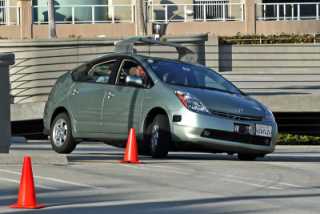 |
We interrupt this construction blog to bring you some news about disruptive technologies that will impact your business and lives sooner rather than later.
I know that this is a construction-focused blog, but we think that we should at the very least talk about the technology happenings that may impact the industry. Besides, if nothing else, it will give you some great “woo woo” conversation points over cocktails at your next networking event.
We have talked about the tallest buildings in the world and we thought that we would talk a little about two subjects, the 3D printer and the new McKinsey report on Disruptive Technologies, that are headed your way.
First, the 3D printer – A team at the Harvard School of Engineering and Applied Science has printed lithium ion microbatteries at a nano scale (that is smaller than a grain of sand) using a 3D printer with a nozzle smaller than a human hair. If you are like me and have very little hair left, that is a big deal. They can vary the power of the battery by stacking more or fewer of the active layers. "So What?" you say.
According to Chemistry World, these “printed” microbatteries can be used to power micro robots, medical devices, and other flexible miniature devices.
Who is to say how those devices might be used in future lighting systems or safety equipment for buildings? Nonetheless, it has been done and another barrier has been breached.
Second, the folks at McKinsey have updated their 2010 study of disruptive technologies that will change the way we do things. That study contains some interesting items that should provoke some conversations for sure. They present 12 disruptive technologies that are emerging today. The 3D printer is one of those, but advanced robots and robotic tools that are already being used for layout by some companies are beginning to emerge.
Another disruptive technology will likely be autonomous or near autonomous vehicles, such as the robotic cars that Google has driven over 400,000 miles with the only accidents caused by human drivers. How could those vehicles impact the construction industry of the next 25 years when there are major skilled worker shortages?
Also on the McKinsey list are next generation genomics, new methods of energy storage for future use, new materials and even more technologies that will likely impact our building methods over the next ten years.
Of course, they have not just emerged in the last year, many of those have been developing over the last five to seven years in various stages. Interesting article.
One other thing that you might make note of. In the recession of the last six years, the tinkerers were tinkering in their garages and “skunkworks” on their favorite projects. Many of those will fall to the cutting room floor, but many more will develop into viable products that will begin to come to market over the next three years. Those products have the potential to change the way we design and construct buildings in amazing ways. It is truly a very exciting time right now and we will bring some of those innovations to your attention as we see them.
We now return you to our regularly scheduled construction blogs.



Comments
Facebook Comments
Check out comments about this post on Facebook.
Add new comment